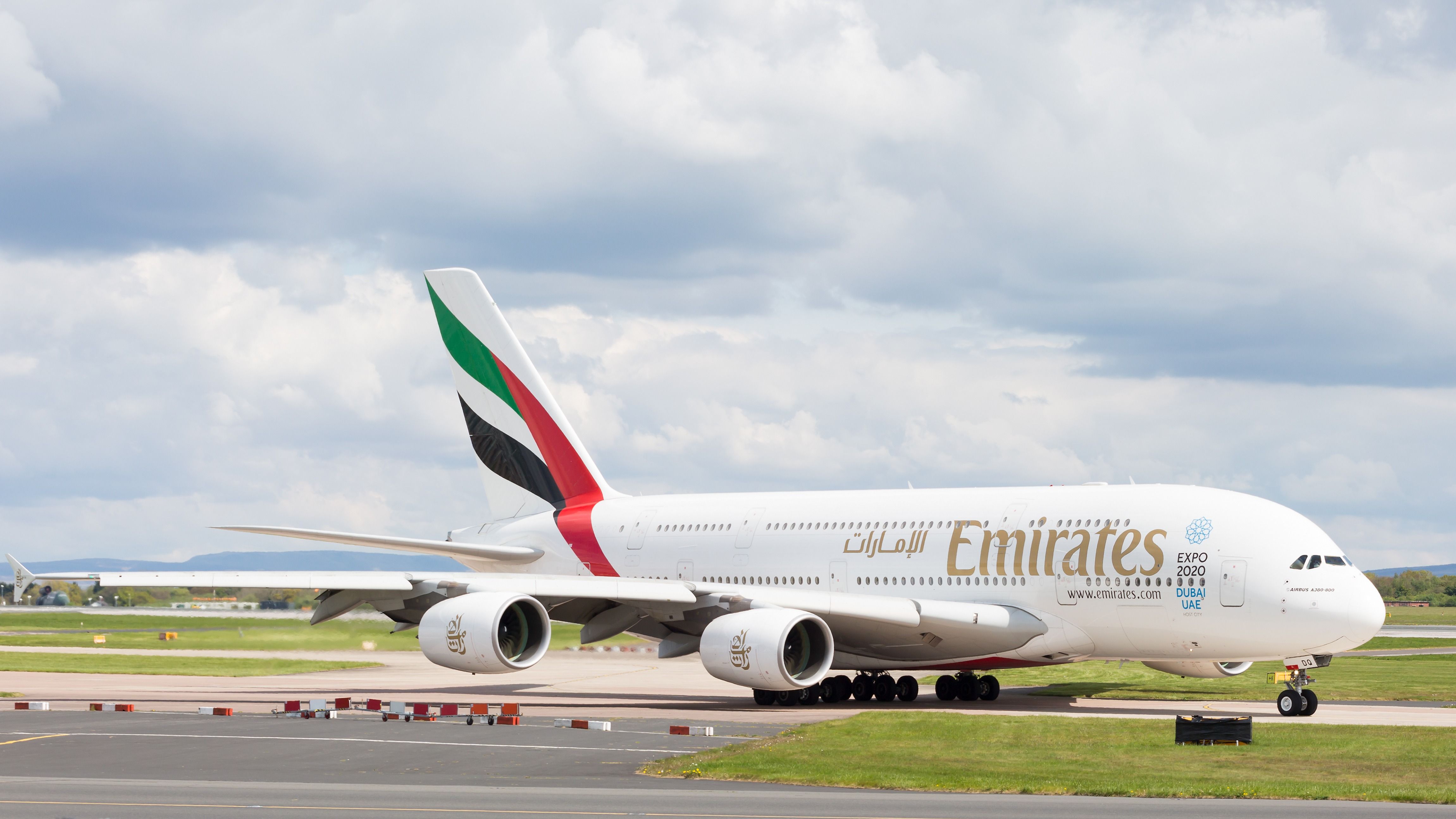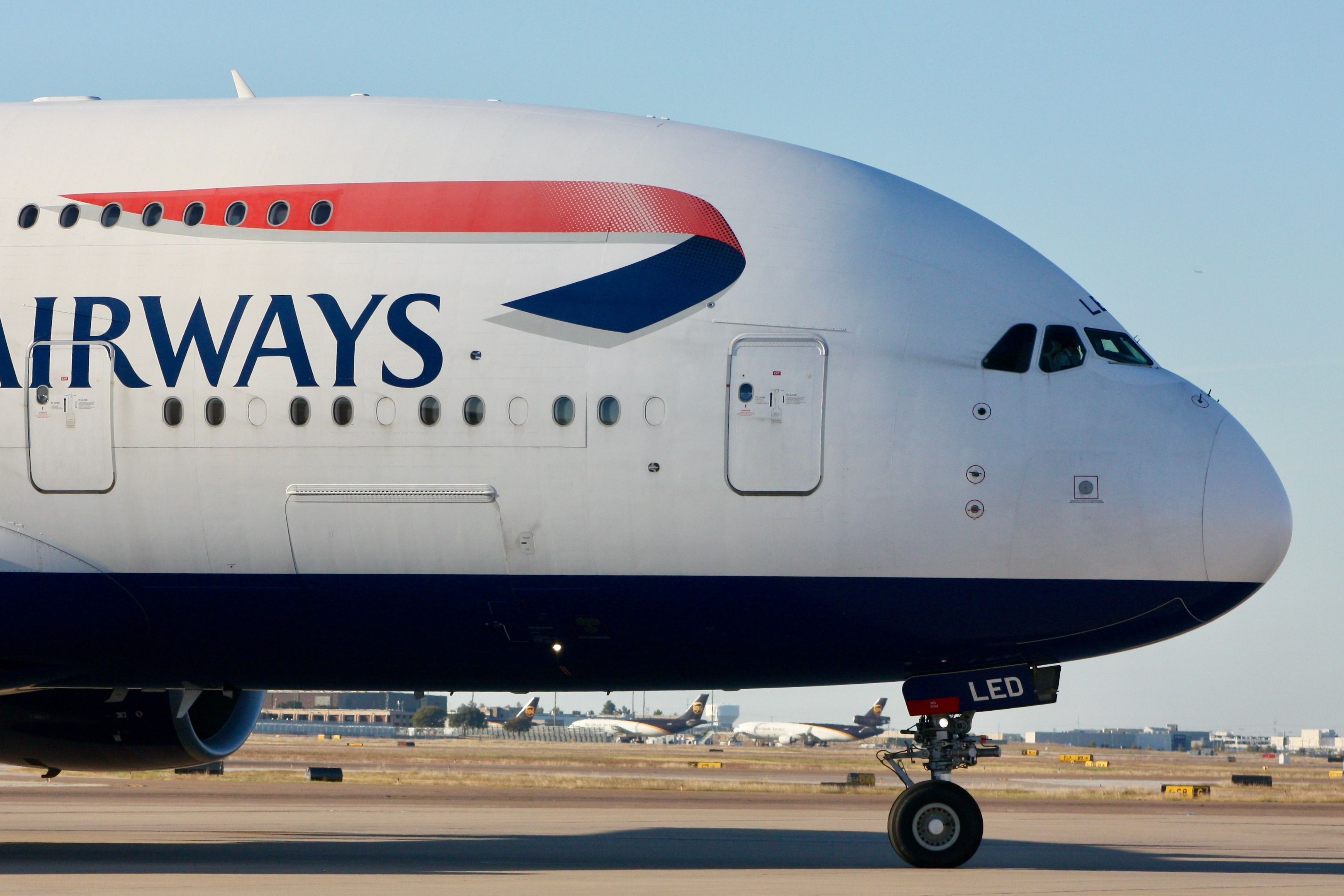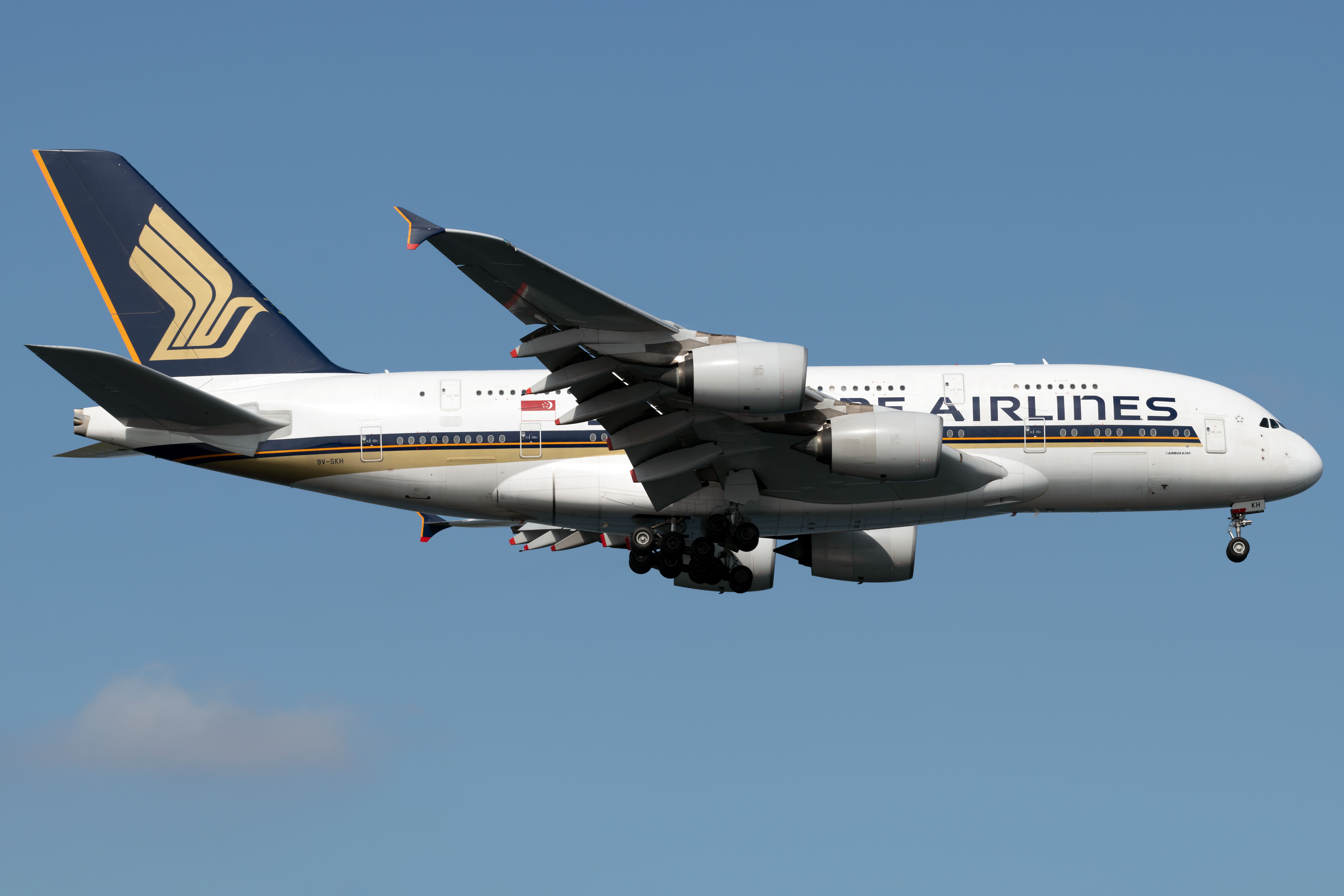More than 1,800 Airbus A380 flights are scheduled to European destinations this month, according to the aviation analytics companyĚý. Six airlines will operate the double-decker aircraft on routes connecting various parts of the world to Europe.
ĚýEurope's Busiest Airbus A380 Routes This Month
 Photo:ĚýSteve Cordory | Shutterstock
Photo:ĚýSteve Cordory | Shutterstock
The Dubai (DXB) toĚýĚý(LHR) route is Emirates’ flagship route, featuring six daily flights entirely operated by the airline’s fleet of Airbus A380s. This high-yield, high-capacity route is a key part of Emirates' network. Emirates is all about luxury on this route, from first-class private suites to an onboard lounge for premium passengers. Heathrow's role as a gateway to Europe reinforces the importance of this route.
Not only doesĚýĚýoperate A380 flights to LHR. For other airlines operating the A380, London Heathrow is also one of the busiest routes in their schedules, requiring the high capacity that only the A380 can provide.
Ěý
Another airline with a high number of scheduled flights to LHR is Etihad Airways. The Gulf carrier will operate 83 flights from its hub at Zayed International Airport (AUH) to LHR in July 2025. British Airways connects its LHR hub to Johannesburg (JNB) using its Airbus A380 fleet, with 62 flights planned for the month. Meanwhile, Qatar Airways and Singapore Airlines will each operate their Airbus A380s between their respective hubs, Doha (DOH) and Singapore Changi (SIN), and LHR, also totaling 62 flights each this month.
More High-Traffic A380 Routes
 Photo:ĚýAustin Deppe | Shutterstock
Photo:ĚýAustin Deppe | Shutterstock
Following Emirates’ DXB to LHR route, the second-busiest A380 routes this month are Emirates flights from DXB to Paris Charles de Gaulle (CDG) and to Manchester (MAN), according to Cirium. Each route will see 93 flights in July 2025. However, the Manchester route will offer greater overall capacity, with 52,654 seats compared to 48,173 seats on the Paris route, indicating that Emirates is planning to use higher-capacity A380s for its Manchester service.
The third-busiest Airbus A380 route is theĚýĚýfrom AUH to LHR, with a total of 84 flights planned for this month. Meanwhile, the fourth-busiest A380 route to Europe is the Emirates DXB to London Gatwick (LGW) route, with a total of 83 scheduled flights this month.
Airline | Route | Number of Flights |
|---|---|---|
Emirates | Dubai (DXB)-London (LHR) | 186 |
Emirates | Dubai (DXB)-Paris (CDG) Dubai (DXB)-Manchester (MAN) | 93 93 |
Etihad Airways | Abu Dhabi (AUH)-London (LHR) | 84 |
Emirates | Dubai (DXB)-London Gatwick (LGW) | 83 |
British Airways Emirates Qatar Airways Singapore Airlines | Johannesburg (JNB)-London (LHR) Dubai (DXB)-Amsterdam (AMS), Munich (MUC), Milan (MXP) Doha (DOH)-London (LHR) Singapore (SIN)-London (LHR) | 62 62 62 62 |
Fifth place is shared by four airlines across six routes, each with 62 scheduled A380 flights this month. Emirates will operate 62 flights each from DXB to Amsterdam (AMS), Munich (MUC), and Milan (MXP). British Airways will operate 62 A380 flights between Johannesburg (JNB) and London Heathrow (LHR). Meanwhile,ĚýĚýand Singapore Airlines will each run 62 A380 flights from their respective hubs in Doha (DOH) and Singapore Changi (SIN) to LHR.
Instead of the usual three daily flights, the carrier will operate only two A380 services to LGW.
Airbus A380 Operators And Fleets
 Photo: Vincenzo Pace | Simple Flying
Photo: Vincenzo Pace | Simple Flying
Currently, eleven airlines operate the Airbus A380. These airlines include Emirates, Singapore Airlines, British Airways, Global Airlines, Lufthansa, Qantas, Qatar Airways, Korean Air, Asiana Airlines, All Nippon Airways, and Etihad Airways.
Emirates is the world’s largest Airbus A380 operator, with a fleet of 118 aircraft, according toĚýĚýdata. British Airways ranks second with 12 A380s, followed by Singapore Airlines with 10. Australia's Qantas and Qatar Airways also operate a total of 10 Airbus A380s, as per ch-avation.

- Launch Customer(s)
- Manufacturer
- Aircraft Type
- First Delivery
- October 15, 2007
Airbus delivered a total of 251 A380 aircraft before ending production in 2021. Although the original plan was to produce 750 units, the program concluded well short of that goal.
- Ěý
